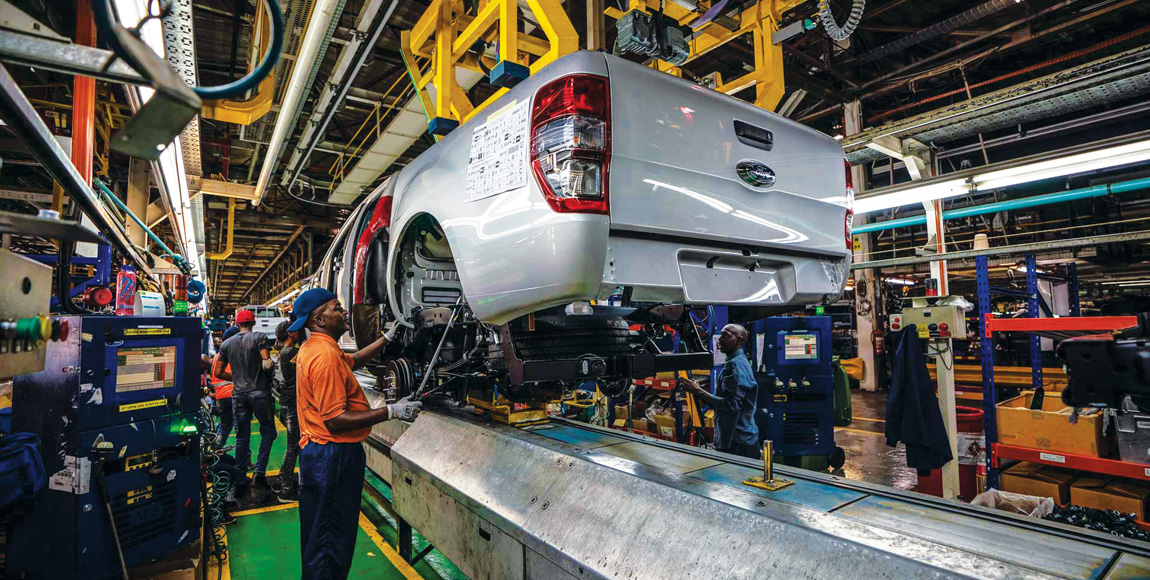Confidence inspired!

Through its substantial investments in production facilities for its Ranger bakkie in South Africa, Ford has underlined its level of confidence in the future of the country’s automotive industry
Growth in South Africa’s automotive sector is on an upward trajectory, driven by the country’s vehicle export business, according to an assessment by the Ford Motor Company of Southern Africa (FMCSA).
During a tour of the company’s recently upgraded assembly plant at Silverton, Pretoria, spokesmen for the manufacturer indicated that exports of light commercial vehicles – and, in particular, the brand’s Ranger pick-up – had played a significant role in helping to bolster the local industry’s fortunes, despite the slowdown of new vehicle sales in the domestic market.
With statistics from the National Association of Automobile Manufacturers of South Africa (Naamsa) showing that the country’s vehicle exports for the first 10 months of the year amounted to 338 955 units – well on track to eclipse the annual total of 351 139 units achieved last year – Ford’s representatives pointed out that, since 2010, production volumes at Silverton had increased by around 400 percent, making the plant the country’s leader in light commercial vehicle exports.
Apart from manufacturing the Ranger at the facility – including the high-performance Raptor derivative – the company also assembles on the same production line its Everest SUV. About 720 vehicles are built each day at the plant – a rate of one new vehicle every 94 seconds, or about 33 an hour. Conrad Groenewald, director of marketing, sales and service, says that, since production of the Ranger started, more than half a million units have rolled off the production line.
Given that South Africa’s Automotive Production and Development Programme calls for an increase in annual production by the country’s seven vehicle manufacturers next year, the industry’s trajectory appears secure – and Ford is committed to fully lending its full support to augmented volumes.
In this regard, over the past decade the company has invested about R11 billion in upgrades to the Silverton plant – and recently introduced a third shift – as well making substantial improvements to its engine factory at Struandale, Port Elizabeth.
“Struandale has earned its stripes as both a regional centre of excellence, and cornerstone of Ford’s South African legacy,” says a statement issued by the company. “The plant has capacity to produce up to 250 000 fully assembled engines annually – including the advanced 2,0-litre Bi-Turbo and Single-Turbo engines used in the Ranger and Everest.
“Also, it produces 280 000 machined component kits per year, making it the only Ford facility in the world which both machines components and assembles engines for the global Ranger programme.”
According to the statement, the significant investment Ford has made to its facilities over the years underpins the level of confidence the company has in the future of the automotive industry in South Africa. “Also, the investment reaffirms our ongoing commitment to the country as a manufacturer, exporter and key employer in the automotive sector,” the statement adds.
According to Groenewald, the company employs around 5 500 people in South Africa, and supports a further 60 000 jobs within the value chain. Based on company calculations, he estimates that Ford’s turnover represents about one percent of South Africa’s gross domestic product (GDP), thus making it a significant contributor to the country’s manufacturing sector and broader economy.
Published by
Focus on Transport
focusmagsa




